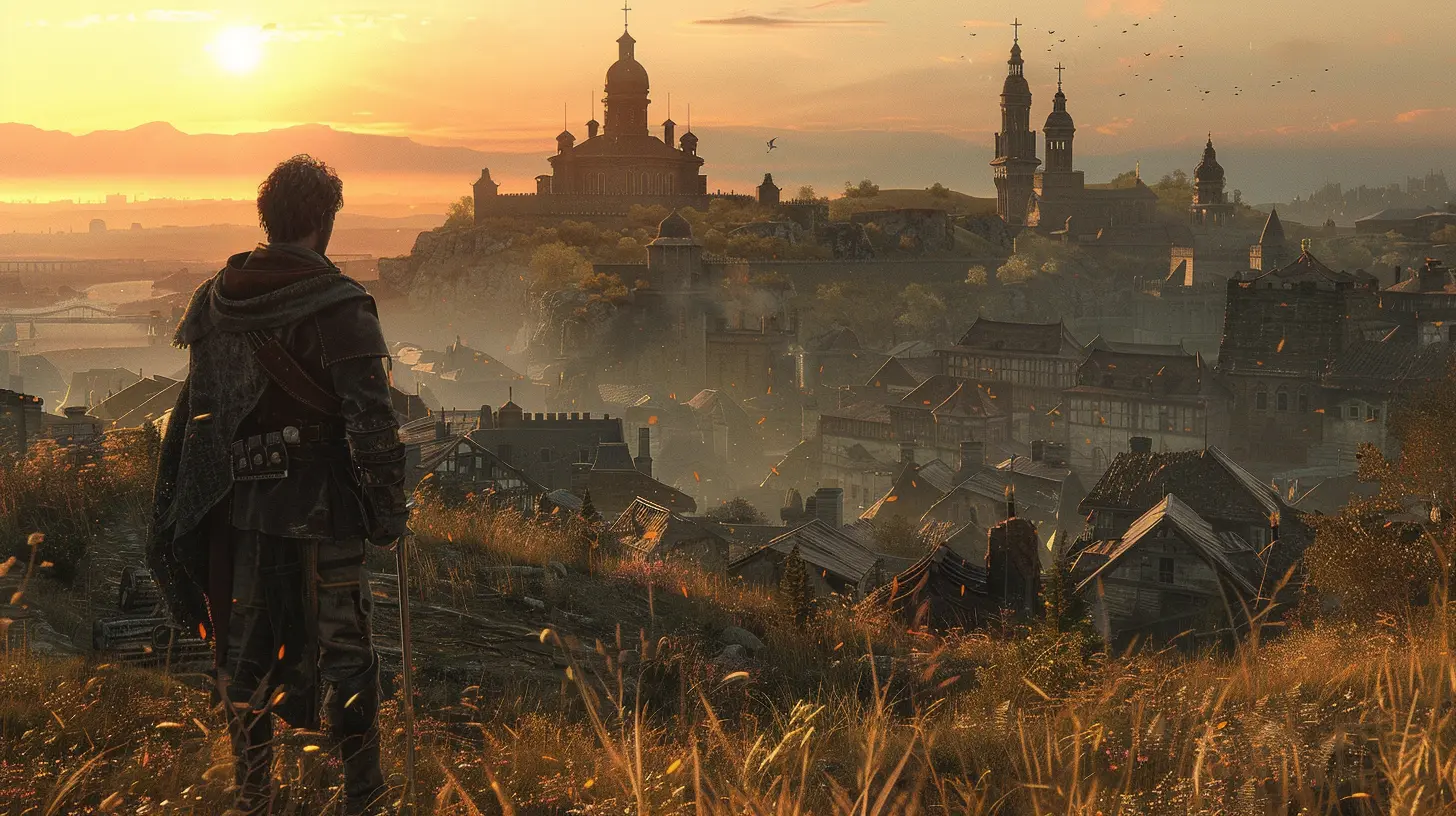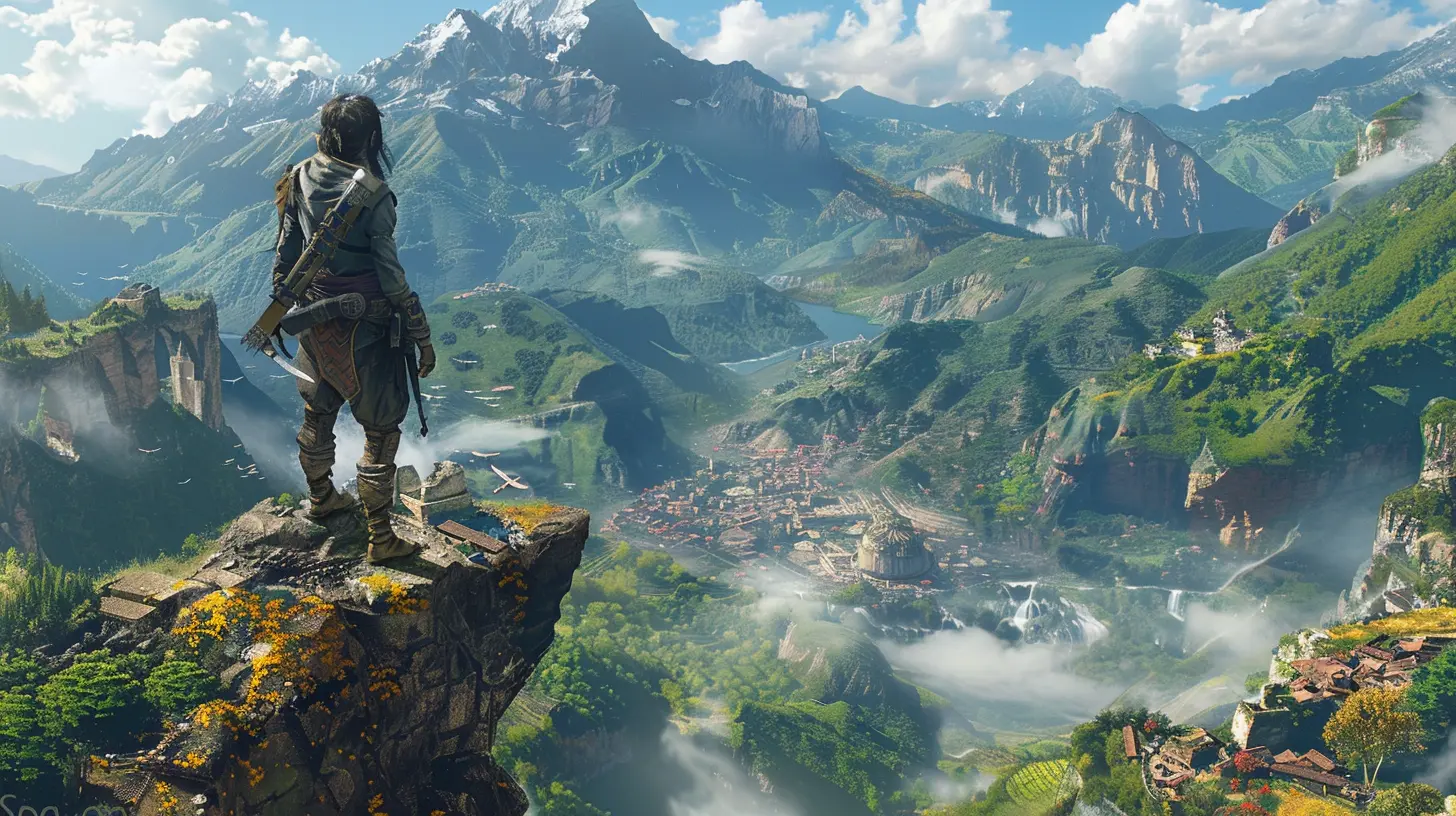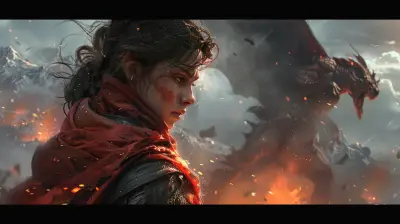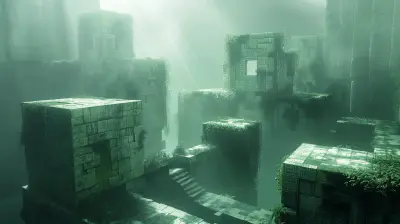How Open World Games Handle the Art of Discovery
30 July 2025
Ever booted up an open-world game and felt that overwhelming but electrifying sensation of possibility? You’re standing amidst towering mountains, dense forests, vast deserts, or futuristic cities, and your mission? Well, that’s up to you. Maybe you'll follow the path the developers laid out—or maybe you'll veer off to chase a storm, search for hidden loot, or stumble into a story that wasn’t even on the map. This is the core magic of open-world games: discovery.
But how on earth do developers pull that off? How do they make these massive digital playgrounds feel alive, rewarding, and genuinely fun to just wander through? Strap in, because we’re diving deep into how open-world games master the art of discovery.
The Magic of "What’s Over That Hill?"
Open-world design is built around a single, burning curiosity: "What's over there?"Rather than dragging you by the hand, these games use subtle nudges—visual cues, ambient sounds, or even just a sliver of something interesting in the distance—to make you want to leave the beaten path. Everything from the curve of a mysterious road to a glint on the horizon is strategically placed to tickle your curiosity.
A player doesn't just run from quest point A to point B—they meander, get sidetracked, and accidentally find stuff that impacts their journey. That randomness? It’s completely intentional.
World Design: Not Just Big, But Intriguing
Size matters, sure—but in open-world games, variety trumps scale every time. A massive but empty map is nothing more than a walking simulator, and players can sniff out filler content from a mile away.Game designers use these clever world-building tricks to keep things interesting:
1. Visual Landmarks
Think of it like a postcard in the distance. Mountains, ancient ruins, bizarre rock formations—these visual markers scream "come check this out!" They catch the eye and pull players away from the main road almost like they're whispering secrets.2. Environment Storytelling
Ever walked into a cabin in the woods in a game and found a dusty journal and a skeleton slumped over a table? No cutscene, no dialogue, but somehow… a full story. This is environment storytelling at its finest. Open-world games are jam-packed with these breadcrumb trails.3. Dynamic Worlds
Weather systems, day/night cycles, and random world events breathe life into the environment. You might stumble upon a dragon attacking a town in Skyrim or witness a gang ambush in Red Dead Redemption 2. These moments make the world feel reactive—like it goes on with or without you.
Reward Systems: What’s in It for Me?
Let’s be real—curiosity only gets us so far. We want shiny things, XP boosts, better gear, and new abilities. The secret lies in rewarding exploration just enough to make you feel like a genius for finding that spot in the forest no one else did.Hidden Loot and Easter Eggs
Games like Zelda: Breath of the Wild hide Korok seeds in the strangest of places, rewarding players who pay attention to tiny environmental oddities. Meanwhile, titles like GTA V toss in bizarre UFOs or cryptic graffiti that hardcore fans can obsess over for months.Skill and Character Progression
In RPG-heavy open-worlds, exploration leads to XP, which leads to better stats and skills. That secret cave you almost missed? It’s home to a rare weapon or a boss fight that levels you up faster than the main quest could.Story Nuggets
Side quests and hidden NPCs expand the lore in ways main missions never can. Sometimes the real story of the world is told through these optional encounters—you just need to find them.
The Balance Between Guidance and Freedom
Here’s the tightrope developers walk: holding your hand just enough to keep you engaged, but letting go before it starts feeling like a guided tour. Too much guidance, and it’s on rails; too little, and players feel lost.The Genius of Map Design
Games like The Witcher 3 scatter question marks and points of interest across the map, giving direction without force. You can go after them or completely ignore them. It’s up to you.Contrast that with games like Elden Ring, which say, “Hey, we’re not marking anything for you. Go out there and figure it out.” Bold move—and it worked. Players loved that sense of mystery, even if it meant occasionally getting lost or murdered by an overpowered enemy behind a bush.
Breadcrumb Trails and Subtle Clues
Developers often use things like lighting, sound, or NPC dialogue to nudge players gently. A trail of torches, distant music, or a bird flying in a certain direction can guide you without breaking immersion.Procedural Generation: Infinite Possibilities?
Let’s talk about the wildcard: procedural generation. Games like No Man’s Sky use algorithms to generate entire universes—literally billions of planets, each with unique terrain, flora, and fauna.Amazing, right? Yes… but also risky.
Procedurally generated content can sometimes lack soul. Without handcrafted detail, players might sense a lack of purpose. So developers often blend the two: procedurally generate the world, then place handcrafted quests, dungeons, and discoveries within it.
Discovery Is Emotional, Not Just Mechanical
Sure, discovery in open-world games is about finding loot, leveling up, and uncovering lore—but it’s also deeply emotional.Remember the first time you found a secret cave in Skyrim? Or rode your horse to a quiet lake at sunset in Ghost of Tsushima? Those moments stick because they feel earned. You chose to go off the path, and the game rewarded you—not just with items, but with mood, atmosphere, and memory.
The Role of Audio and Visual Cues
If you think discovery is all about what you see, think again.Sound plays a massive role in leading players toward secrets. A distant cry, a crackling fire, or the soft hum of nearby treasure all act as invisible breadcrumbs.
Likewise, lighting can spotlight items or areas without being too obvious. A beam of moonlight on a suspicious box? Yeah, you’re gonna want to check that out.
Multiplayer Elements: Shaping Discovery Together
In online or co-op open-worlds, the sense of discovery often becomes communal. You and your friends might tackle a new region together, split up to search for loot, or share cool things you’ve found.Games like Sea of Thieves thrive on player-driven discovery. There’s no quest marker—just a riddle or a map and the thrill of figuring it out together. When discovery is social, it’s not just about the world—it’s about how you experience it with others.
How Developers Keep Discovery Fresh Over Time
You’ve seen it before: a new open-world game drops, and everyone eats it up. But then… the excitement fizzles. So how do smart devs keep the spirit of discovery alive?Seasonal Events and Expansions
Games like Destiny 2 and Genshin Impact add new regions or events regularly. These inject fresh discovery loops into familiar worlds.Player Mods and Community Content
Bethesda’s open-worlds, especially Skyrim, thrive for years thanks to the modding community. Mods can completely transform a game, adding new places, quests, characters, and even entire story arcs.The Future of Open-World Discovery
As tech evolves, so does the way we discover. AI-driven worlds might one day adapt in real-time to your choices, offering personal stories and evolving environments tailored to your behavior.Imagine a game that watches how you play and reshapes itself to surprise you at every turn. Sounds wild, right? But we’re not far off.
Cloud computing, better AI, and next-gen consoles are giving devs the tools to make discovery feel more human, more unpredictable, and infinitely more rewarding.
Final Thoughts: It's All About That Feeling
At the end of the day, the art of discovery in open-world games isn’t about how many collectibles are scattered on the map. It’s about sparking that inner adventurer, that moment where you pause and think, “I wonder what’s over there…”The best open-world games don’t tell you what to do—they invite you to ask questions, to get lost, to make the journey your own.
And that? That’s real magic.
all images in this post were generated using AI tools
Category:
Open World GamesAuthor:

Jack McKinstry
Discussion
rate this article
1 comments
Daria Heath
Open world games excel in fostering exploration through immersive environments and layered narratives. By integrating environmental storytelling, dynamic events, and rewarding discoveries, they create a compelling sense of agency, encouraging players to uncover secrets and engage deeply with their vast worlds.
August 9, 2025 at 3:11 AM

Jack McKinstry
Thank you for your insightful comment! You've brilliantly captured how open world games leverage exploration and storytelling to enhance player agency and create immersive experiences.


